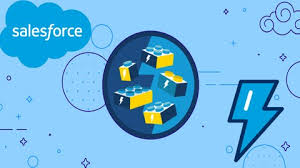Introduction to LWC Core Concepts
Lightning Web Components (LWC) in Salesforce leverage two fundamental JavaScript features to create efficient, reactive components: decorators and lifecycle hooks. These mechanisms work together to:
- Manage component communication and data flow
- Control rendering behavior and performance
- Handle initialization and cleanup
- React to changes in data or component state

Deep Dive into LWC Decorators
1. @api – The Public Interface Decorator
Purpose: Enables component communication and exposes public properties/methods
Key Characteristics:
- Marks properties/methods as publicly accessible
- Enables parent-to-child communication
- Supports reactive property binding
- Creates a contract for component consumers
Implementation Patterns:
javascript
Copy
// Child component exposing properties and methods
import { LightningElement, api } from 'lwc';
export default class Modal extends LightningElement {
@api title = 'Default Title'; // Public property with default
@api show() { // Public method
this.template.querySelector('.modal').classList.remove('hidden');
}
@api hide() {
this.template.querySelector('.modal').classList.add('hidden');
}
}
Best Practices:
- Design intentional, minimal public APIs
- Document all @api properties/methods thoroughly
- Treat @api properties as immutable within child components
- Use clear, descriptive names for public members
Performance Considerations:
- Avoid frequent updates to @api properties
- Consider debouncing for input properties
- Use immutable data patterns for complex objects
2. @track – The Reactive Property Decorator (Legacy)
Evolution of Reactivity:
- Early LWC: Required for all reactive properties
- Current LWC: Primitive properties reactive by default
- Modern Use: Only needed for specific object/array cases
When to Use Today:
- Direct modification of object properties
- Array mutations (push, splice, etc.)
- Complex nested object structures
Modern Alternatives:
javascript
Copy
// Preferred immutable pattern (no @track needed)
updateUser() {
this.user = { ...this.user, name: 'Updated Name' };
}
// Array operations
addItem(newItem) {
this.items = [...this.items, newItem];
}
3. @wire – The Data Service Decorator
Core Functionality:
- Reactive data binding to Salesforce data
- Supports Apex methods and Lightning Data Service
- Automatic UI updates when data changes
Implementation Options:
javascript
Copy
// Property syntax (automatic)
@wire(getContacts) contacts;
// Function syntax (manual control)
@wire(getContacts)
wiredContacts({ error, data }) {
if (data) this.contacts = data;
if (error) this.error = error;
}
Advanced Patterns:
- Reactive parameters with
$prefix - Combining multiple wire adapters
- Error handling strategies
- Performance optimization with debouncing
Lifecycle Hooks Demystified
The Component Lifecycle Journey
- constructor()
- First hook called during component creation
- Ideal for non-reactive property initialization
- No DOM access available
- connectedCallback()
- Called when component is inserted into DOM
- Perfect for data loading and event setup
- May run multiple times if component is removed/re-added
- renderedCallback()
- Executes after every render cycle
- Use for DOM-dependent operations
- Caution: Can trigger infinite loops if misused
- disconnectedCallback()
- Cleanup hook when component is removed
- Essential for preventing memory leaks
- Remove event listeners, intervals, subscriptions
- errorCallback()
- Error boundary for child components
- Catches errors in child rendering/lifecycle hooks
- Enables graceful error handling
Practical Implementation Guide
Component Communication Patterns
Parent-to-Child:
html
Copy
<!-- Parent template -->
<c-child public-property={value}></c-child>
Run HTML
Child-to-Parent:
javascript
Copy
// Child component
this.dispatchEvent(new CustomEvent('notify', { detail: data }));
Performance Optimization Techniques
- Debouncing Input Handlers:javascriptCopy@api set searchTerm(value) { this._searchTerm = value; this.debouncedSearch(); }
- Conditional Rendering:htmlCopy<template if:true={isLoaded}> <!– Heavy content –> </template>Run HTML
- Efficient DOM Operations:javascriptCopyrenderedCallback() { if (!this.cachedElement) { this.cachedElement = this.template.querySelector(‘.target’); } }
Common Anti-Patterns to Avoid
- Infinite Render Loops:javascriptCopy// Bad – causes infinite loop renderedCallback() { this.someProperty = new Date(); }
- Direct DOM Manipulation:javascriptCopy// Avoid when possible this.template.querySelector(‘div’).style.color = ‘red’;
- Heavy Constructor Logic:javascriptCopy// Bad – slows component initialization constructor() { super(); this.processLargeDataSet(); }
Advanced Patterns and Best Practices
State Management Strategies
- Centralized State Pattern:javascriptCopyimport { LightningElement, wire } from ‘lwc’; import { store, connect } from ‘c/lwcStateManagement’; export default class ConnectedComponent extends LightningElement { @wire(store) state; connectedCallback() { connect(this); } }
- Event-based State Propagation:javascriptCopyhandleUpdate() { this.dispatchEvent(new CustomEvent(‘statechange’, { bubbles: true, composed: true, detail: { newState } })); }
Testing Lifecycle Hooks
Example Test Case:
javascript
Copy
import { createElement } from 'lwc';
import MyComponent from 'c/myComponent';
describe('Lifecycle hooks', () => {
it('calls connectedCallback when inserted', () => {
const element = createElement('c-my-component', { is: MyComponent });
spyOn(MyComponent.prototype, 'connectedCallback');
document.body.appendChild(element);
expect(MyComponent.prototype.connectedCallback).toHaveBeenCalled();
});
});
Real-World Component Examples
Data Table with Sorting
javascript
Copy
import { LightningElement, api } from 'lwc';
export default class DataTable extends LightningElement {
@api columns = [];
@api data = [];
sortBy(field) {
this.data = [...this.data].sort((a, b) =>
a[field] > b[field] ? 1 : -1
);
}
}
Dynamic Form Generator
javascript
Copy
import { LightningElement, api } from 'lwc';
export default class DynamicForm extends LightningElement {
@api fields;
values = {};
handleChange(event) {
this.values = {
...this.values,
[event.target.name]: event.target.value
};
}
}
Conclusion and Key Takeaways
- Decorators define component interfaces and data connections
@apifor public properties/methods@wirefor reactive data services@trackfor specific reactivity cases
- Lifecycle Hooks manage component state across its lifetime
- Initialize in
constructorandconnectedCallback - Handle rendering in
renderedCallback - Clean up in
disconnectedCallback - Catch errors with
errorCallback
- Initialize in
- Performance is critical
- Minimize DOM operations
- Debounce rapid updates
- Use immutable data patterns
- Testing should verify lifecycle behavior
- Confirm hook execution timing
- Validate cleanup procedures
- Verify error handling
By mastering these concepts, developers can create robust, efficient Lightning Web Components that leverage the full power of the Salesforce platform while maintaining clean, maintainable code architecture.













